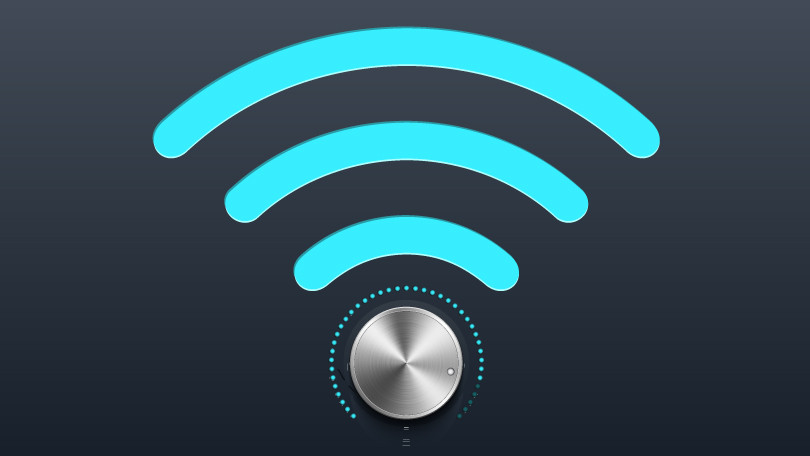Wi-Fi 6 (aka 802.11ax) is promising to transform enterprise wireless networks in much the same way that 5G is promising to transform cellular wireless communications. Both standards promise much higher speeds, reduced network latency, and better support for the Internet of Things (IoT). But what most might not know is that those improvements will come at a significant cost for IT.
The performance benefits promised by Wi-Fi 6 rely on a complete ecosystem. That means, in addition to getting the right access points (APs), you’ll need to ensure there’s sufficient support downstream. This can mean improving your network’s core backbone or adding increased fiber infrastructure to your internet connection. You need this extra throughput space because the multi-Gigabit speeds that Wi-Fi 6 can deliver require faster communications elsewhere on the network or you’ll simply be replacing one bottleneck for another.
In addition, the basic architecture of the network will need serious rethinking because, on one hand, a Wi-Fi 6 AP can handle more connections than earlier standards. On the other hand, there will be more demand for those connections. That demand will be generated by a new generation of devices that manufacturers are already touting will come equipped with support for Wi-Fi 6 and 5G.
“You’re going to need both Wi-Fi 6 and 5G on your devices,” said Jack Gold, Principal Analyst at J. Gold Associates. “Wi-Fi 6 is more than just speed,” he explained. “It also has a mesh component, which is going to be more important than raw speed. 5G is going to be important for sure, but 5G is a lot of different components, and in some cases, it will be delivered over Wi-Fi 6.”
Gold said that, because 5G will be delivered in so many different ways, including over Wi-Fi 6, that enterprise infrastructure needs to be ready. For this reason, those new devices, including new laptops, need to support MIMO, mesh, and 5G offloading.

Wi-Fi 6 Is Coming to Enterprises
To make this possible, Intel is already working to make sure its new round of computers, especially laptops, is ready for this new high-speed level of communications. According to Stephanie Hallford, Vice President and General Manager, Business Client Platforms, at Intel Corporation, the company is already designing in support for Wi-Fi 6 and 5G in its 8th-generation Whiskey Lake processors. She said that the new devices will be Wi-Fi 6-enabled when they arrive on the market.
Aruba Networks (a Hewlett Packard Enterprise or HPE company), is “coming out with enterprise-class Wi-Fi 6,” Hallford said. She added that this will benefit enterprises because Wi-Fi 6 can support four times as many devices on each AP as earlier standards, including 802.11ac (now aka Wi-Fi 5). She also said that the higher speeds and reduced latency will improve the user experience (UX) as will improved battery life.
Aruba’s new Wi-Fi 6 access points, coupled with HPE’s multi-Gigabit networking infrastructure, are designed to use twisted-pair infrastructure to provide bit rates as high as 10 Gigabits per second (Gbps) using 10 Gigabit Ethernet.
Cisco has also just announced new support for Wi-Fi 6 with its Cisco Catalyst 9100 Access Points and its Meraki MR45 and Meraki MR55 Wi-Fi 6 Access Points. Cisco has also just announced its Cisco Catalyst 9600 Series Switches, which are designed to handle the performance demands of a Wi-Fi 6-enabled network at the campus level.
Wi-Fi 6 Also Coming to SMBs
In addition to the enterprise market, there are a number of Wi-Fi products for the small to midsize business (SMB) market, mostly in the form of Wi-Fi 6 routers. Some of those routers include support for multi-Gigabit Ethernet should you be able to find an internet connection that fast.
But that underscores the other part of the Wi-Fi 6 challenge: Even if you can get wireless connections at multi-Gigabit speeds, it does you little good if the rest of your connection to the outside world won’t support such speeds. But that’s not to say that Wi-Fi 6 is pointless because the standard does have other benefits, including 2-way MIMO and mesh capabilities that should go a long way towards eliminating dead spots.
In addition, Wi-Fi 6 is designed with the IoT in mind, which allows it to operate at substantially lower power levels when compared with earlier versions of Wi-Fi. And its low latency features will be critical for some applications, especially in manufacturing and healthcare.
Plan for Upcoming Changes
That still leaves a lot of questions that you’ll likely have to answer during hands-on evaluations in your own environments. What is clear, however, is that you need to start planning how your network will accommodate Wi-Fi 6. You’ll need to confirm that your existing twisted-pair and fiber infrastructure will support those higher throughput numbers, which means arranging for certification testing. And, unless you’ve recently upgraded your wiring, you’ll probably need to replace at least some of it.
In addition, the location and number of APs will change and, while each AP can support more devices, you’ll need to determine how many more devices will appear on your network because of Wi-Fi 6.
My best guess is that the number of APs won’t diminish as much as you might think, but you may need to relocate some to account for higher demand in some areas where new devices begin to appear. And that’s not including delivery of 5G over Wi-Fi 6, which could add even more complications as new 5G phones start to appear.

